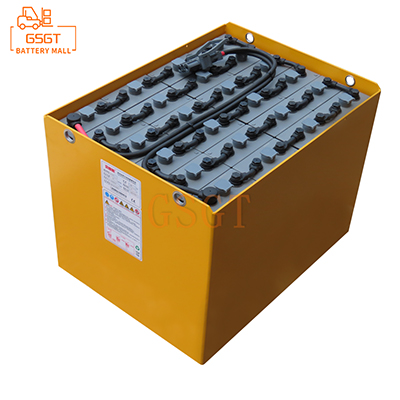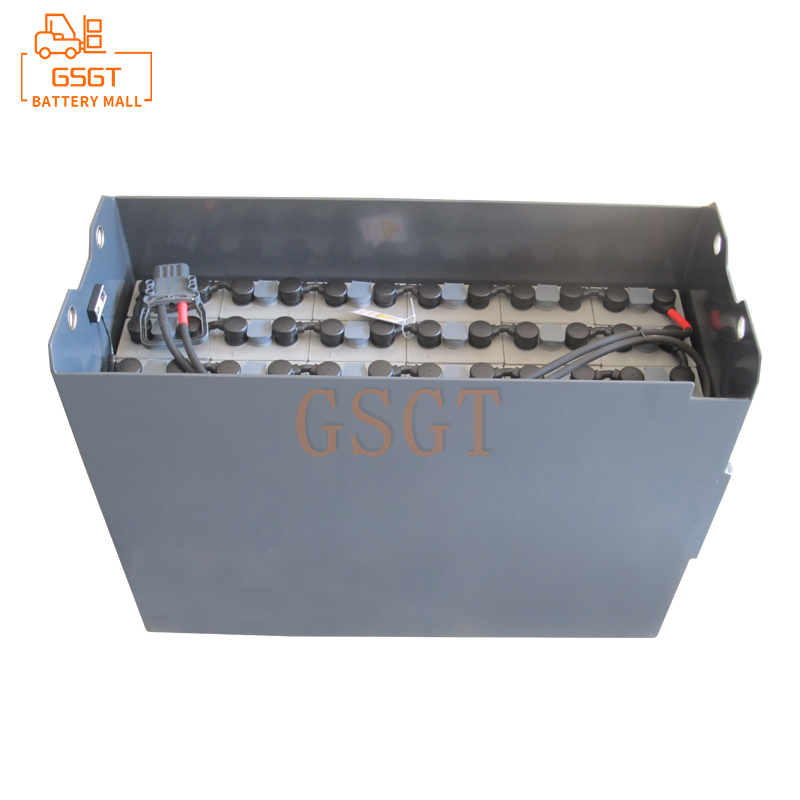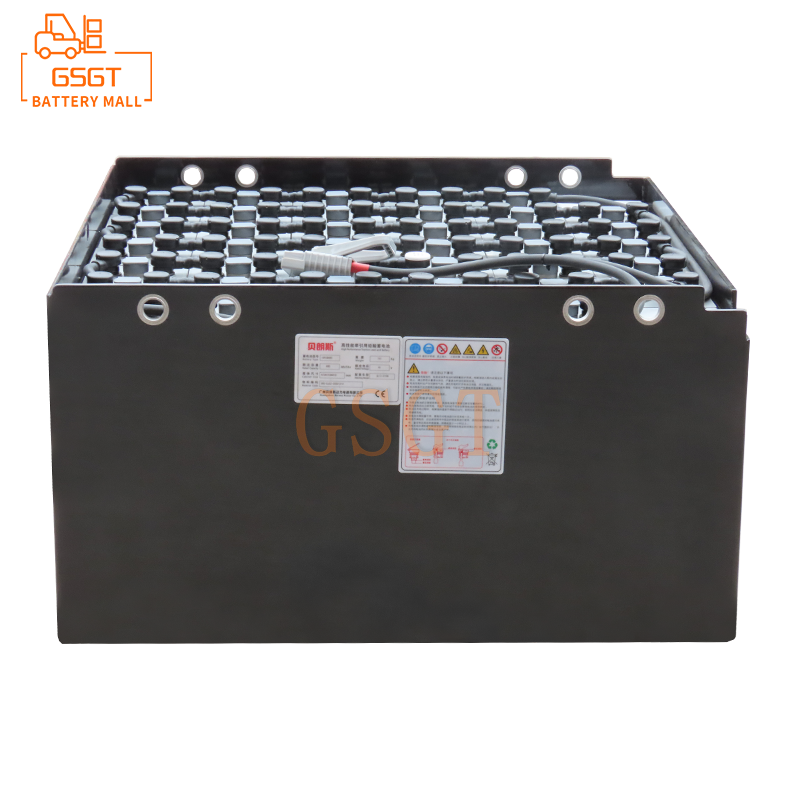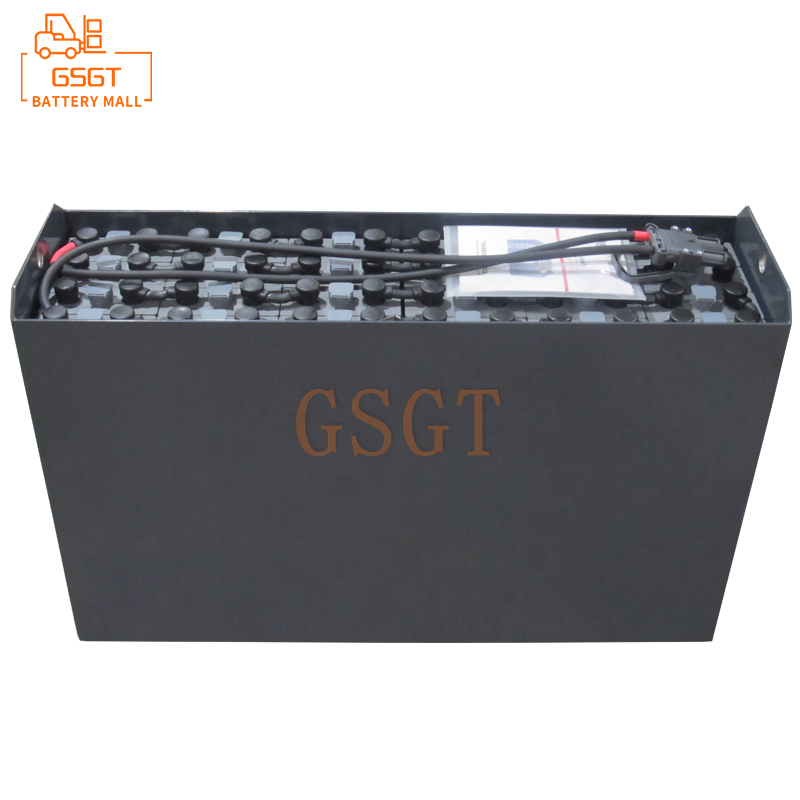Time:2025-06-09 10:59:12
Browse:582
Introduction
In modern logistics and industrial production, forklifts, as key material handling equipment, play a crucial role in the entire production process in terms of operational efficiency and stability. As the power source of the forklift, the performance of the forklift battery directly affects the working performance of the forklift. Among them, the sulfation problem of the storage battery is one of the important factors affecting its performance and lifespan. A thorough understanding of the anti-sulfidation technology for forklift batteries is of great significance for enhancing the operational efficiency of forklifts, reducing operating costs, and promoting the development of green and environmentally friendly industries.
The generation mechanism of vulcanization phenomenon
Under normal circumstances, the lead sulfate generated during discharge can be smoothly reduced during charging. However, under certain specific conditions, such as long-term undercharging, over-discharging, excessively high electrolyte density, and prolonged battery idleness, lead sulfate cannot be completely converted back to its original active substance but instead forms white, hard, and coarse crystalline lead sulfate on the surface of the plates. These crystals gradually accumulate and cover the surface of the plates, hindering the full contact between the electrolyte and the active substances on the plates, resulting in an increase in the internal resistance of the battery and a decline in its charging and discharging performance. This is what is known as sulfation. From a microscopic perspective, the coarse crystalline lead sulfate formed during the sulfidation process has a small specific surface area, and its solubility and dissolution rate in the electrolyte decrease, making it difficult for the electrochemical reactions inside the battery to proceed normally.
The harm of sulfidation to the performance of forklift batteries
Capacity attenuation
The actual capacity of the forklift battery after vulcanization will decrease significantly. As the surface of the plates is covered with lead sulfate crystals, the active substances involved in the electrochemical reaction are reduced, and the amount of electricity that the battery can store and release is decreased. This leads to a shortened working time of forklifts after being fully charged during use, which cannot meet the normal operation requirements. Frequent charging not only affects work efficiency but also increases operating costs. For instance, a forklift that could operate continuously for 8 hours when fully charged may have its working time shortened to 4 to 5 hours or even shorter due to battery sulfation.
The charging acceptance capacity has deteriorated
Sulfidation increases the internal resistance of the battery. During charging, ohmic polarization and concentration polarization intensify. This means that the battery requires a higher charging voltage to accept the charging current, and gas evolution is prone to occur prematurely during the charging process, resulting in a decrease in charging efficiency. Ordinary charging equipment may not be able to fully charge the battery. Even if the charging time is extended, the effect is not obvious, which seriously affects the rapid turnover and use of forklifts.
Shortened service life
Severely sulfated storage batteries gradually lose the active material on the plates, and the plate structure is damaged, causing the battery to fail to work normally and be scrapped prematurely. Under normal circumstances, the service life of lead-acid batteries in forklifts may be 2 to 3 years. However, if severe sulfation problems occur, their service life may be shortened to 1 year or even less, which undoubtedly greatly increases the replacement cost and maintenance workload of the equipment.
Exploration of the Causes of Sulfation in Forklift Batteries
Charging factor
Insufficient charging: Long-term use of a charger with insufficient charging voltage or current cannot fully charge the battery, resulting in the lead sulfate on the plates not being fully reduced.
Failure to charge in time: After the forklift is discharged, if it cannot be charged in time, the lead sulfate on the plates will gradually recrystallize in the electrolyte, forming coarse lead sulfate crystals, which will then lead to sulfation. Especially in work scenarios where forklifts are frequently used, if the charging time is not reasonably arranged and the battery remains in a discharged state for a long time, the risk of sulfation will increase significantly.
Overcharging: Although overcharging is not as common as undercharging, it can still cause damage to the battery. Long-term overcharging will cause the internal temperature of the battery to rise, accelerate the loss of water in the electrolyte and the corrosion of the plates, and may also promote the formation and accumulation of lead sulfate, increasing the possibility of sulfation.
Use environmental factors
Temperature influence: Temperature has a significant impact on the performance of forklift batteries. In a low-temperature environment, the viscosity of the electrolyte increases, the diffusion rate of ions slows down, the internal resistance of the battery increases, and the charging acceptance capacity deteriorates, which easily leads to insufficient charging and thus causes sulfation. In high-temperature environments, the self-discharge rate of batteries increases, the evaporation of water in the electrolyte intensifies, and the concentration of sulfuric acid rises, which also speeds up the sulfation process. For instance, in the cold winter, after forklifts have been operating outdoors for a long time, if the batteries are not promptly moved to a warm environment for charging, the risk of battery sulfation will increase significantly. In the hot summer, if the battery has poor heat dissipation, it is also prone to sulfation problems.
Electrolyte issue: Both excessively high and low electrolyte densities can have adverse effects on the battery. If the density is too high, the solubility of lead sulfate will decrease and it is prone to form crystals on the plates. If the density is too low, the capacity and performance of the battery will decline, and it may also lead to insufficient charging, which in turn causes sulfation. In addition, if the electrolyte contains impurities such as metal ions, it will accelerate the self-discharge of the battery and the corrosion of the plates, and promote the formation of sulfation.
Battery itself factors
Plate material and manufacturing process: The material quality and manufacturing process of the plates have a significant impact on the battery's anti-sulfation performance. If the purity of the plate material is not high, it contains impurities, or the active substances on the plates are unevenly distributed during the manufacturing process, it may lead to the battery being more prone to sulfation during use.
Battery design life and aging: As the battery's usage time increases and the number of charge and discharge cycles grows, the internal components such as the plates and electrolyte will gradually age. As a battery ages, its active substances gradually decrease, its internal resistance increases, and its anti-sulfation ability also declines accordingly, making it more prone to sulfation until it can no longer be used normally.
Detailed Explanation of Anti-Sulfidation Technology for Forklift Batteries
Pulse repair technology
Working principle: Pulse repair technology is currently a widely used anti-sulfidation technology. The principle is to use a pulse generator to produce pulse currents of specific frequency, amplitude and time, and apply them to the vulcanized battery. When a pulsed current acts on the lead sulfate crystals on the plates, under the instantaneous high voltage of the pulse, the lattice structure of the lead sulfate crystals changes. The crystals are broken and reconverted into soluble lead sulfate, which then participates in the electrochemical reaction and restores the activity of the plates. From the perspective of solid-state physics, any insulating layer can be broken down at a sufficiently high voltage. The pulse repair technology precisely utilizes this principle to break down the insulating layer formed by lead sulfate crystals and restore its electrical conductivity.
Technical advantages: Compared with traditional repair methods, pulse repair technology has many advantages. It can act more precisely on the vulcanized plates, causing less damage to the battery and avoiding excessive corrosion and deformation of the plates as in methods such as high-current charging. Meanwhile, pulse repair technology can carry out online repair without disassembling the battery, which is simple and convenient to operate and greatly improves the repair efficiency. Experimental data show that by applying pulse repair technology, the capacity recovery rate for slightly and moderately sulfated batteries can reach 60% to 80%, which can effectively extend the battery's service life and reduce operating costs.
Electrolyte optimization technology
The role of additives: Adding special additives to the electrolyte is the key to electrolyte optimization technology. These additives can play multiple roles, such as enhancing the conductivity of the electrolyte, reducing the internal resistance of the battery, and improving the charging and discharging efficiency; Inhibit the formation of lead sulfate crystals and reduce the possibility of sulfidation; Enhance the stability of the electrolyte, prevent the deterioration of its components, and extend the service life of the electrolyte.
Improvement of electrolyte formula: In addition to adding additives, optimizing the electrolyte formula is also an important means to enhance the battery's anti-sulfation performance. By adjusting the concentration of sulfuric acid and the proportion of other components in the electrolyte to make it more suitable for the battery's requirements under different working conditions, the overall performance and anti-sulfation ability of the battery can be improved.
Daily maintenance measures for anti-sulfation of forklift batteries
Correct charging operation
Select the appropriate charger: Choose a matching charger based on the type, specification and capacity of the forklift battery. Make sure that the output voltage, current and other parameters of the charger meet the requirements of the battery. Avoid using inferior or mismatched chargers to prevent damage to the battery.
Follow the charging specifications: Operate strictly in accordance with the charging specifications provided by the battery manufacturer. Before charging, check the battery's appearance for any damage, leakage or other conditions to ensure a safe charging environment. During the charging process, do not interrupt the charging at will. Try to fully charge the battery. At the same time, avoid overcharging and overdischarging. Each charging time should not be too long, generally controlled within 8 to 10 hours. After using the forklift, the battery should be charged as soon as possible to avoid it remaining in a discharged state for a long time.
Regular equalization charging: For forklift battery packs composed of multiple individual cells, regular equalization charging is very necessary. Due to the possible performance differences among individual batteries during use, long-term use may lead to insufficient or overcharging of some batteries, which in turn may cause sulfation. Equalization charging can keep the power and voltage of each individual battery consistent, improving the overall performance and service life of the battery pack. It is generally recommended to perform equalization charging on the battery pack every 1 to 2 months.
Reasonable usage habits
Avoid excessive discharge: During the operation of the forklift, pay attention to observing the battery level display to prevent excessive discharge. When the battery power drops to a certain level, the operation should be stopped in time and the battery charged. Excessive discharge will increase the amount of lead sulfate produced on the plates, and the generated lead sulfate will penetrate deep into the interior of the plates, making it difficult to be completely reduced during subsequent charging, thereby accelerating the sulfation process.
Control the working environment temperature: Try to keep the working environment temperature of the forklift within an appropriate range. When working in high-temperature environments, it is important to dissipate heat from the battery. This can be achieved by installing fans or using forklifts in well-ventilated areas to lower the battery temperature. In low-temperature environments, measures such as heating the battery, like using heating pads, can be taken to enhance the battery's working performance and reduce the risk of sulfation. For instance, during the hot summer days, park the forklift in a shady area for charging and resting to prevent the battery from being exposed to the scorching sun for a long time. When it is cold in winter, preheat the battery in advance before starting the operation.
Regularly perform deep discharge and charging: Regularly conducting a deep discharge and charging of the forklift battery helps activate the active substances in the battery, enhancing its capacity and performance. Deep discharge can reduce the battery's power to a lower level, and then perform a long period of slow charging to fully charge the battery. It is generally recommended to perform a deep discharge and charging operation every 2 to 3 months.
Regular inspection and maintenance
Visual inspection: Regularly inspect the appearance of the forklift battery to check if there is any damage, deformation, leakage or other conditions on the battery casing. If any problem is found with the casing, the battery should be replaced in time to prevent electrolyte leakage from causing damage to the surrounding environment and equipment. At the same time, check whether the battery terminals are corroded or loose. If necessary, clean and tighten them in time to ensure a good connection of the battery.
Electrolyte inspection: Regularly check the liquid level and density of the electrolyte. For open-type lead-acid batteries, the electrolyte level should be maintained at a certain height above the plates. If the level is too low, distilled water or a dedicated electrolyte replenishment solution should be added in time. Meanwhile, use a hydrometer to measure the density of the electrolyte to ensure it is within the normal range. Both excessively high and low electrolyte density may affect the performance and lifespan of the battery, and adjustments need to be made based on the actual situation. For maintenance-free batteries, although it is not necessary to frequently add electrolyte, it is still necessary to regularly check their sealing performance and appearance for any abnormalities.
Conclusion
The sulfation problem of forklift batteries seriously affects the normal use and operating costs of forklifts. By deeply understanding the principle, hazards and causes of sulfation, adopting advanced anti-sulfation technologies, and combining with correct daily maintenance measures, the sulfation problem can be effectively prevented and solved, and the performance and service life of forklift batteries can be improved. During the operation of forklifts, enterprises should attach great importance to the maintenance and management of batteries, actively apply advanced technologies and methods, ensure the stable operation of forklifts, improve production efficiency and reduce operating costs.

$3405

$2040

$5710

$3400

MESSAGE
Professional And Efficient
Security
Affordable Price
Professional Services